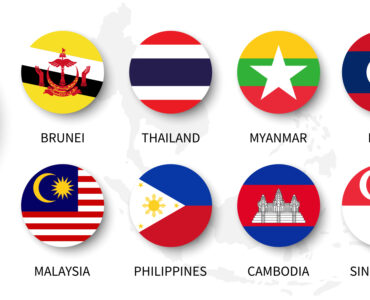Thai is a fascinating language. It has a neat logic to the way some words are put together. A visitor to Thailand must keep in mind that not all Thais are fluent in English. The same as a person whose native language is English may not be fluent in French or German. But here is a language tip that may help you ingratiate yourself with people in Thailand.
Imagine you are in a restaurant or on the street, you are not wearing your watch and you want to know what time it is. You know it is early evening because the sun has just gone down. You do not speak the Thai language and you speak to the waitress or some neatly dressed Thai girl on the street. You ask, “What time is it?” The Thai girl thinks for a few seconds then replies, “One o’clock.” Now you are confused. The sun has just set and you know it should be between 6:30 p.m. and 8:00 p.m. But the Thai girl has told you the right time. But why did she tell you it is 1:00 p.m. when it is 7:00 p.m.?
Here is the tip.
The Thais have a lovely unique way of telling the time. Let’s take a look at this Colloquial System used in everyday Thai conversation. To speak about the time in Thai language, the day is divided into 4 six-hour periods starting at midnight, 6:00 a.m., midday, and 6:00 p.m. The Thai language uses a word “TOOM” to signify a time period which is any time between 6:00 p.m. and midnight. After 6:00 p.m. there are five counts of the clock:
- 7:00 p.m. = NEUNG (1) TOOM
- 8:00 p.m. = SONG (2) TOOM
- 9:00 p.m. = SAM (3) TOOM
- 10:00 p.m. = SEE (4) TOOM
- 11:00 p.m. = HA (5) TOOM
The counting starts at one again at the beginning of each period. Do you see now that the Thai girl told the correct time? For Thais 7:00 p.m. is “1 TOOMB.” So when asked what time it is the Thai girl looks at her watch which displays 7:00 p.m. (one “TOOM” for Thais) so she tells you it is 1 o’clock. Correct. Hey, welcome to Thailand, the land of smiles. Isn’t this fun? In case you are wondering, yes, there are more time signifiers. Here they are:
- DTEE = the period from midnight (GLUNG KEUN) until 6:00 a.m.
- MONG CHOW = the period from 6:00 a.m. until midday.
- BI MONG = the period from midday until 6:00 p.m.
To make things a little more interesting these signifiers are placed at different locations around the Thai numbers as follows:
DTEE SONG = 2:00 a.m.
SONG MONG CHOW = 8:00 a.m. (The second hour after 6:00 a.m.)
BI SONG MONG = 2:00 p.m.
SONG TOOM = 8:00 a.m. (the second hour after 6:00 p.m.)
SONG = 2.
Now to make it challenging:
Midday = TEEANG WUN.
Midnight = TEEANG KEUN.
6:00 a.m. = HOCK MONG CHOW.
6:00 p.m. = HOCK MONG YEN.
NEUNG = 1, SONG = 2, SAM = 3, SEE = 4, HA = 5, HOCK = 6, JED = 7, BAD = 8, GOW = 9, SIP = 10, SIP ET = 11, SIP SONG = 12.
So there is a little peek at Thai language and a unique way of telling the time. If you are meeting a Thai girl or man for a date then knowing how to tell the time in the Thai language will give you a better chance at meeting on time.
There is a good chance you won’t be waiting for your Thai girl / man at 1:00 p.m. while she / he intends to arrive at 7:00 p.m.
Click here to learn more about English Thai translation services.





